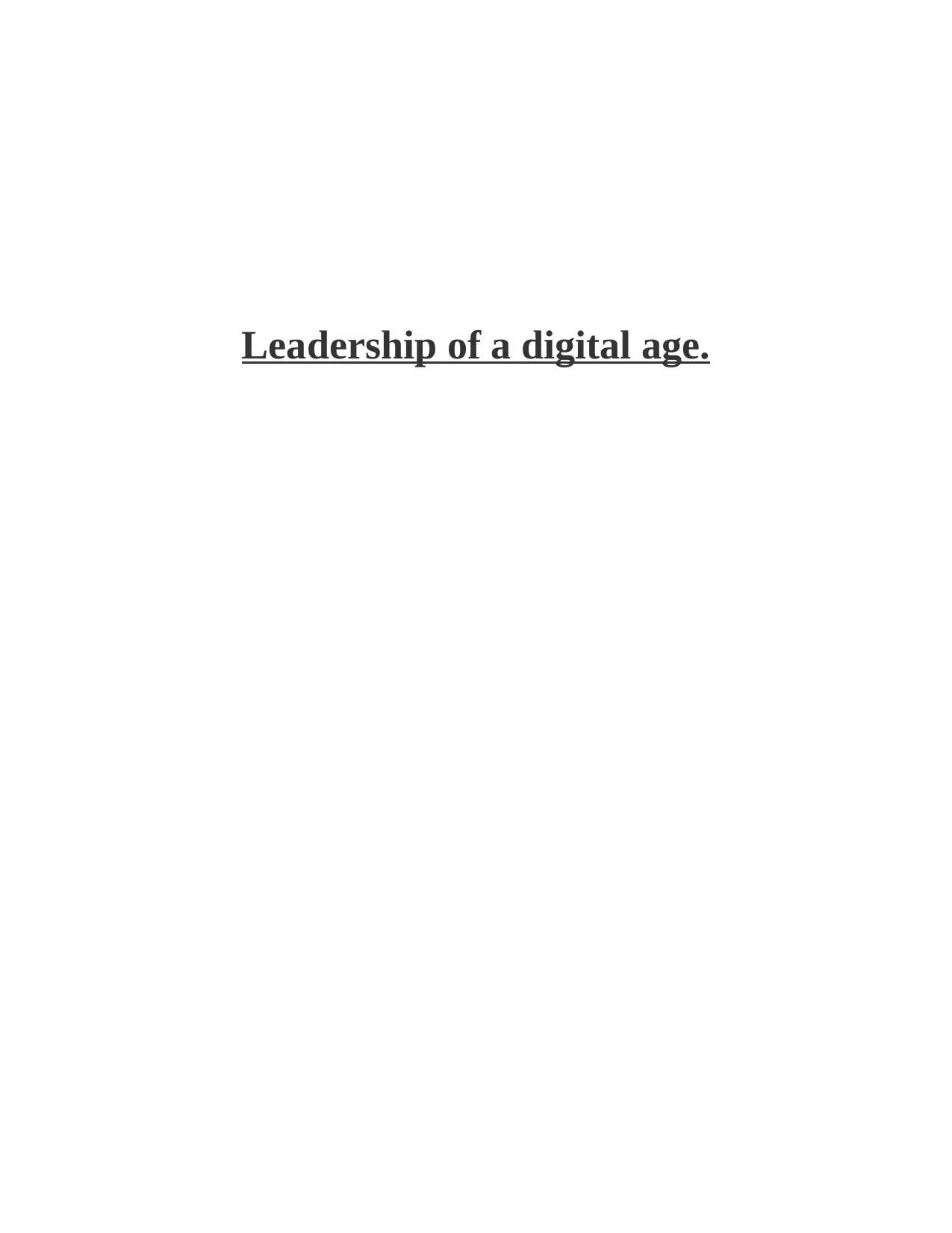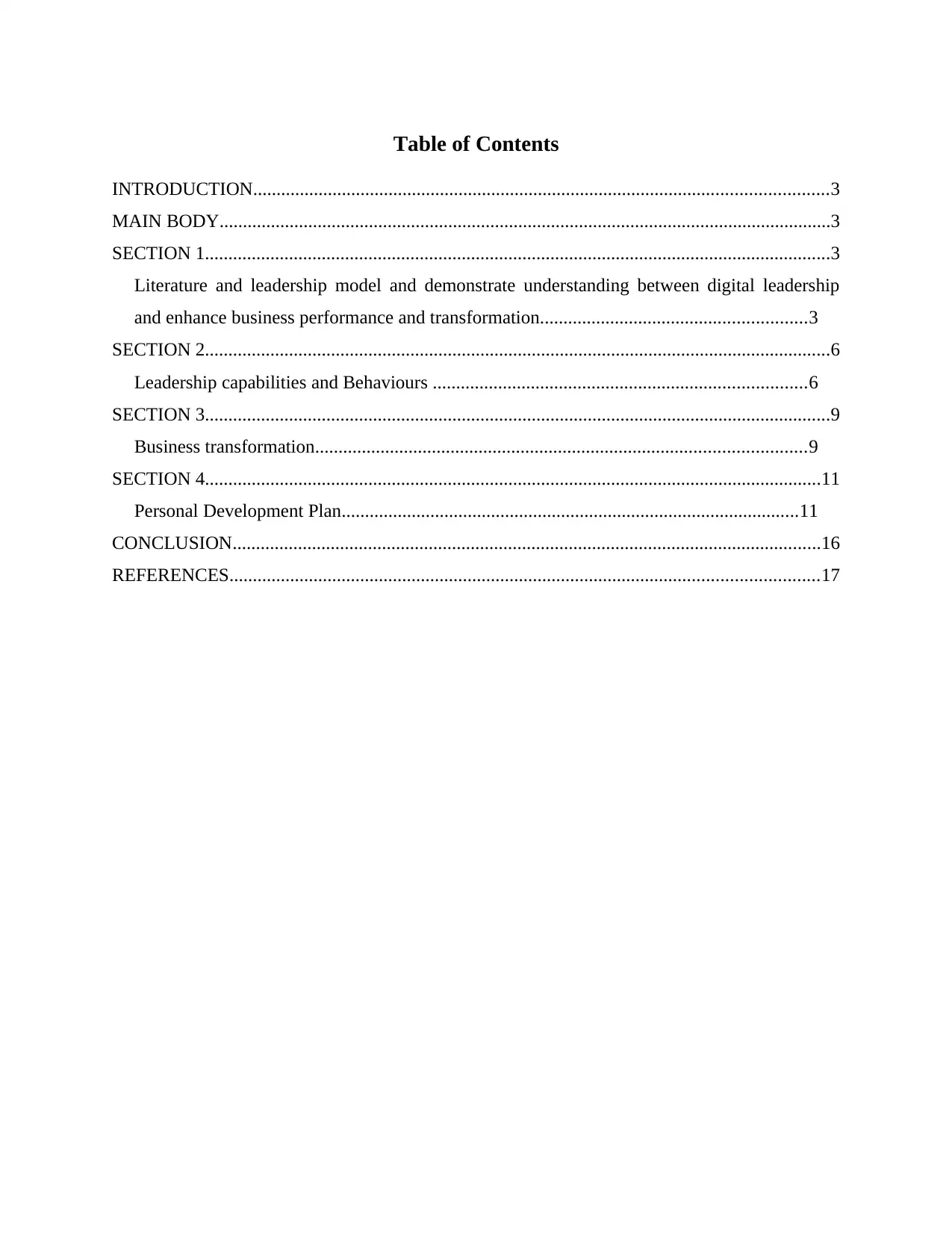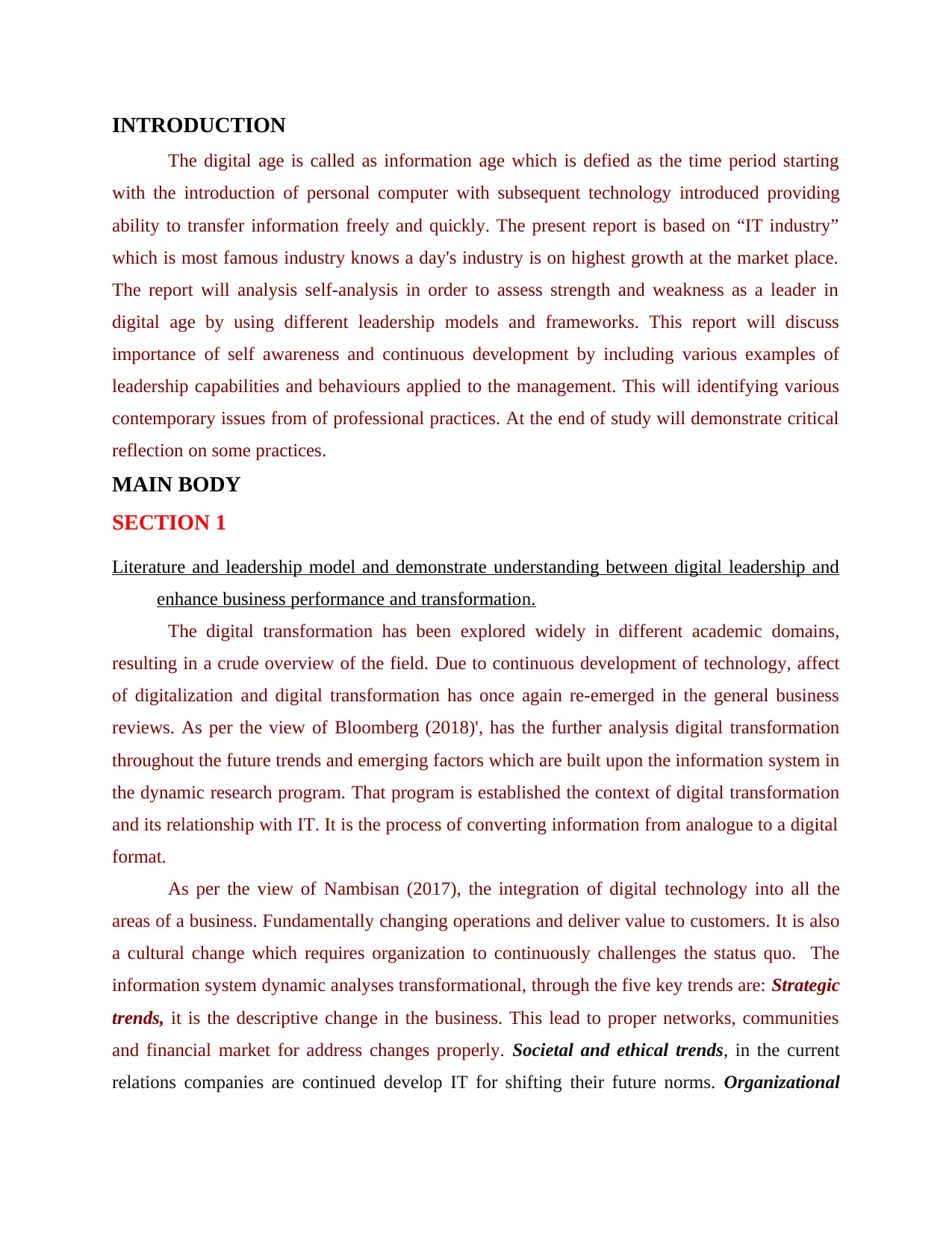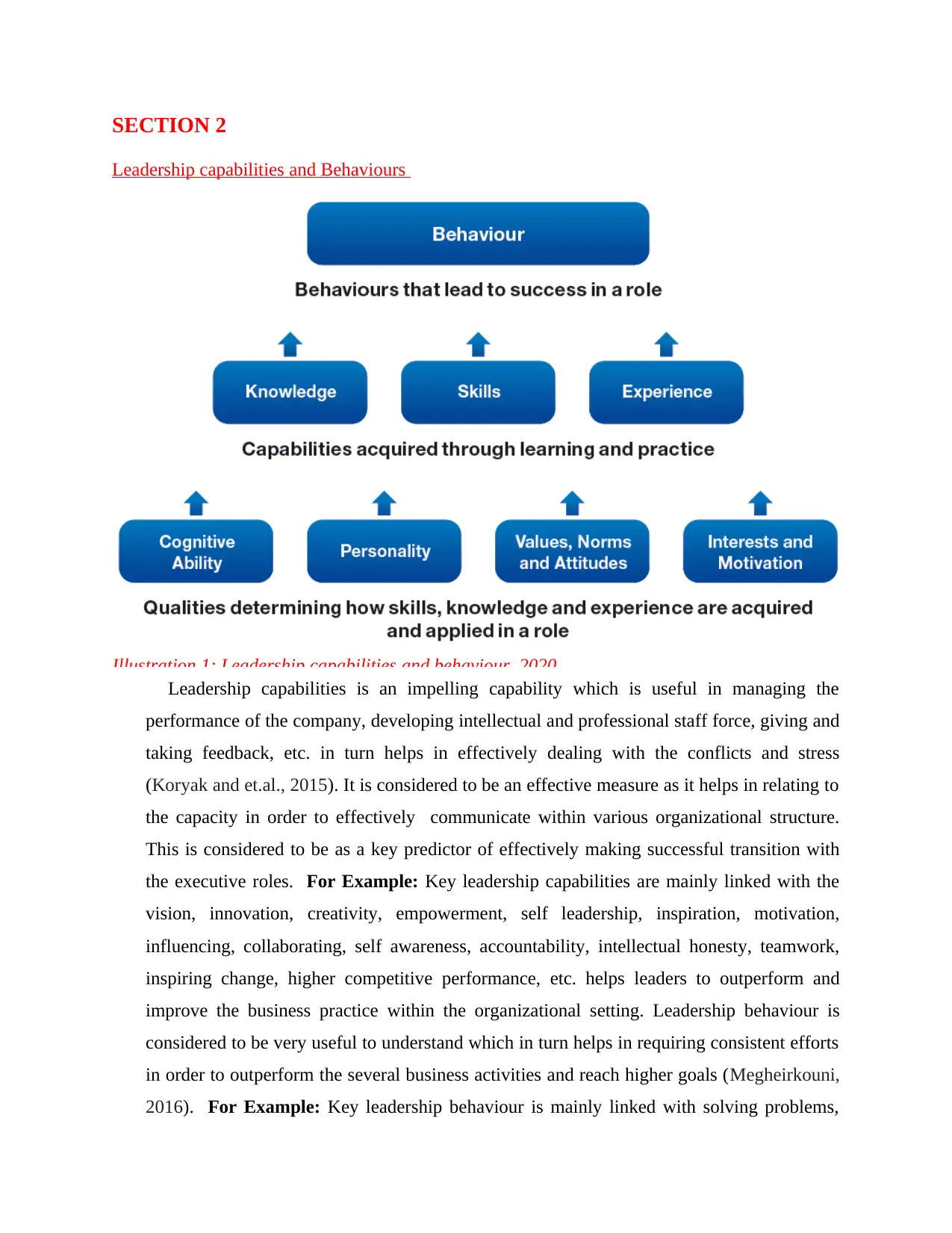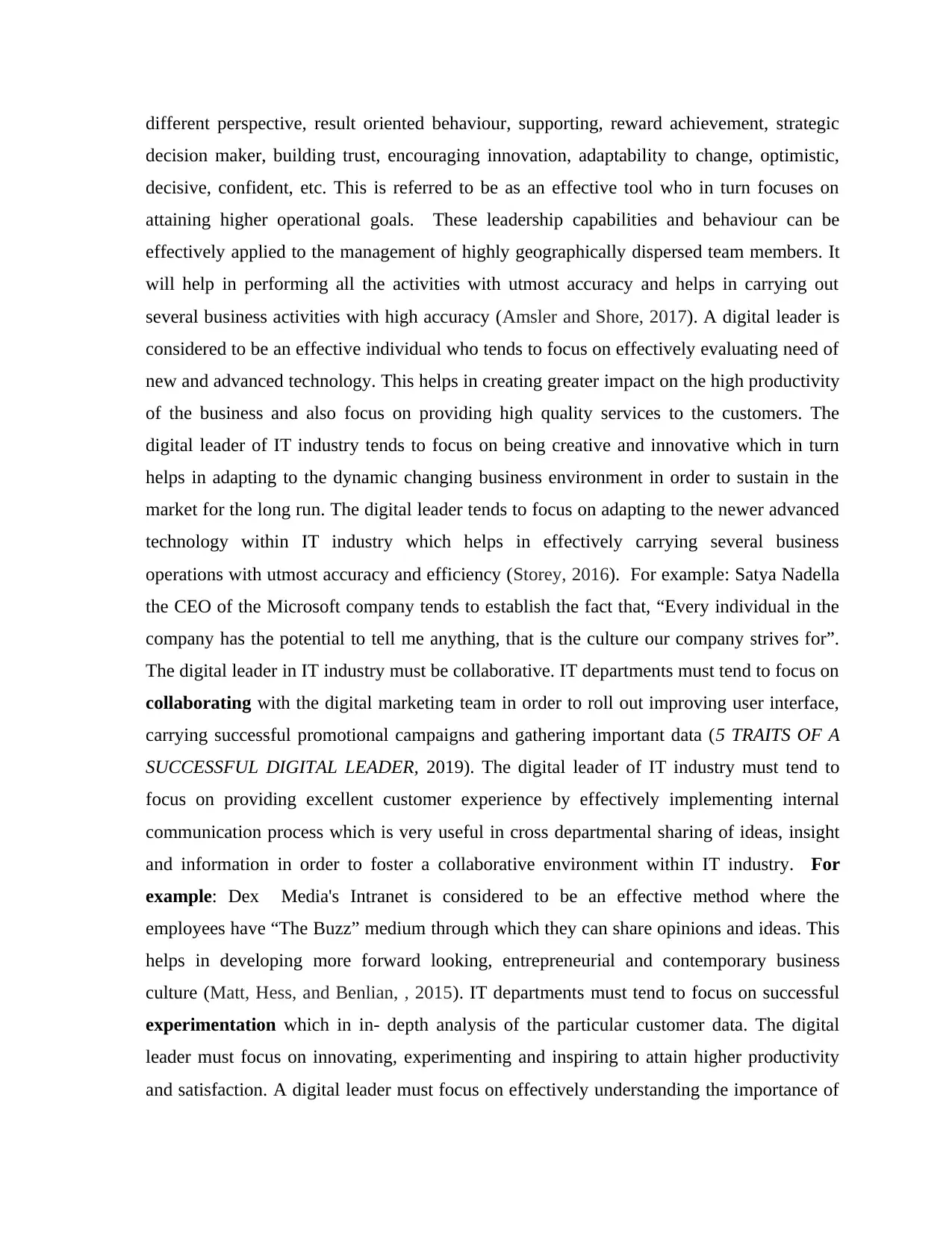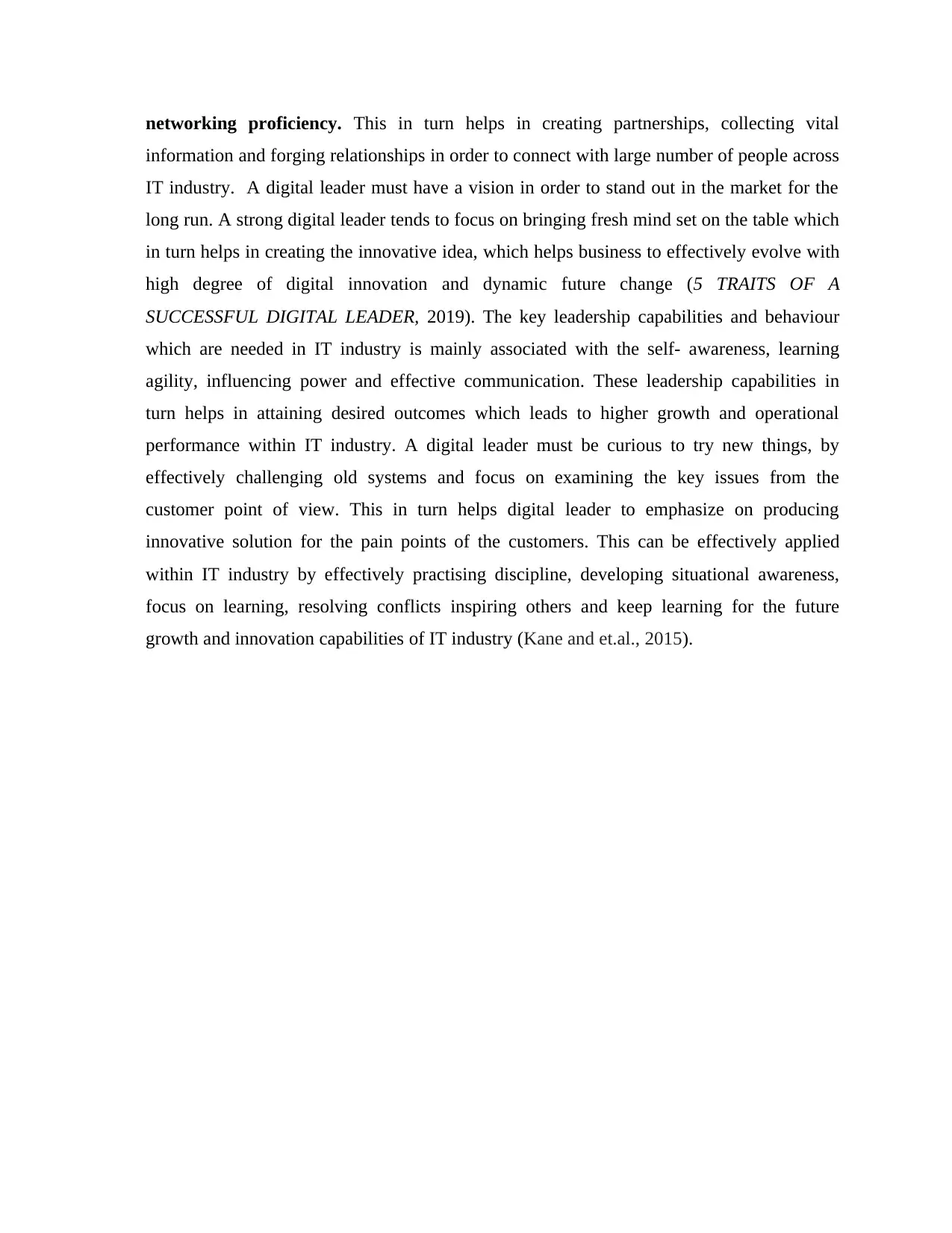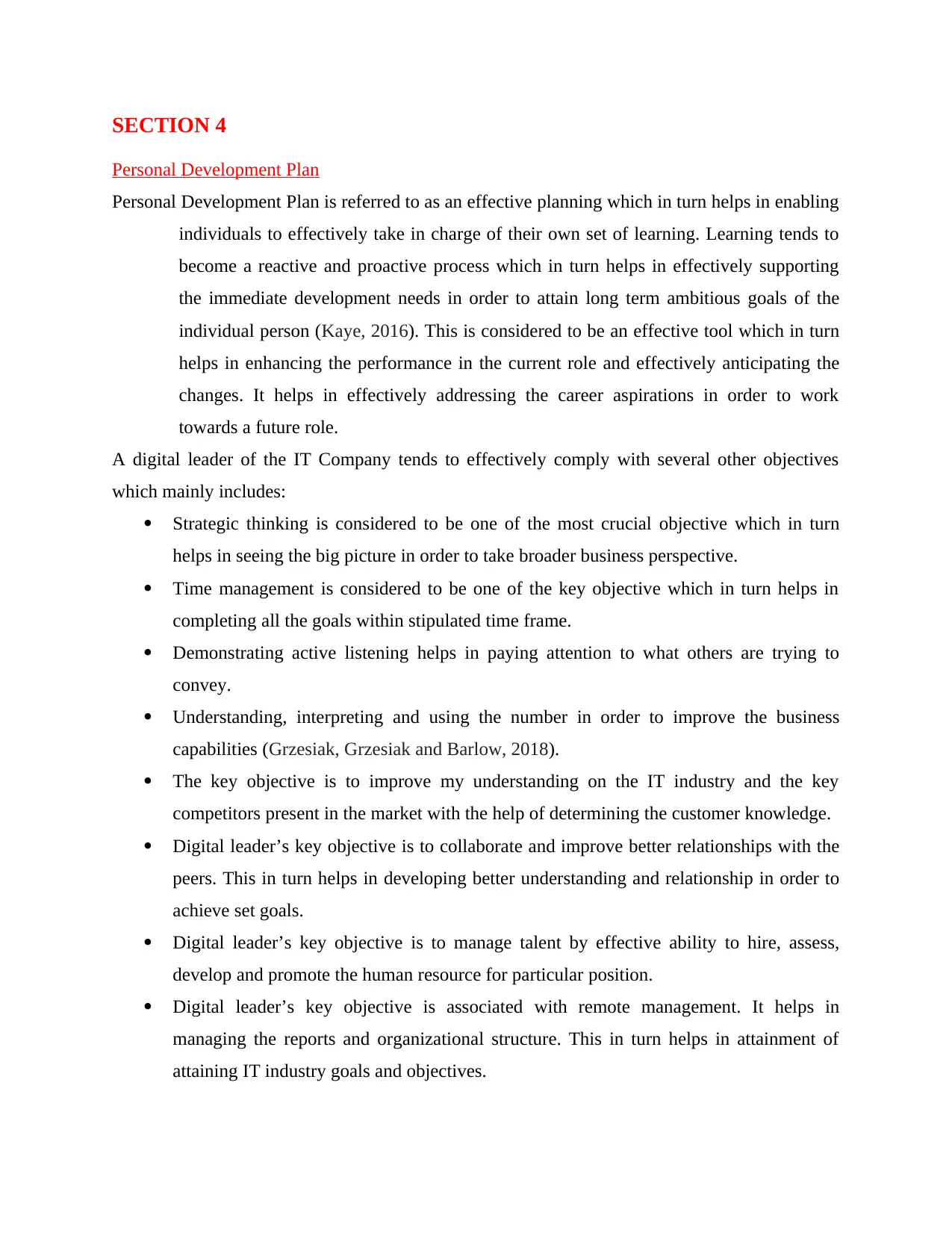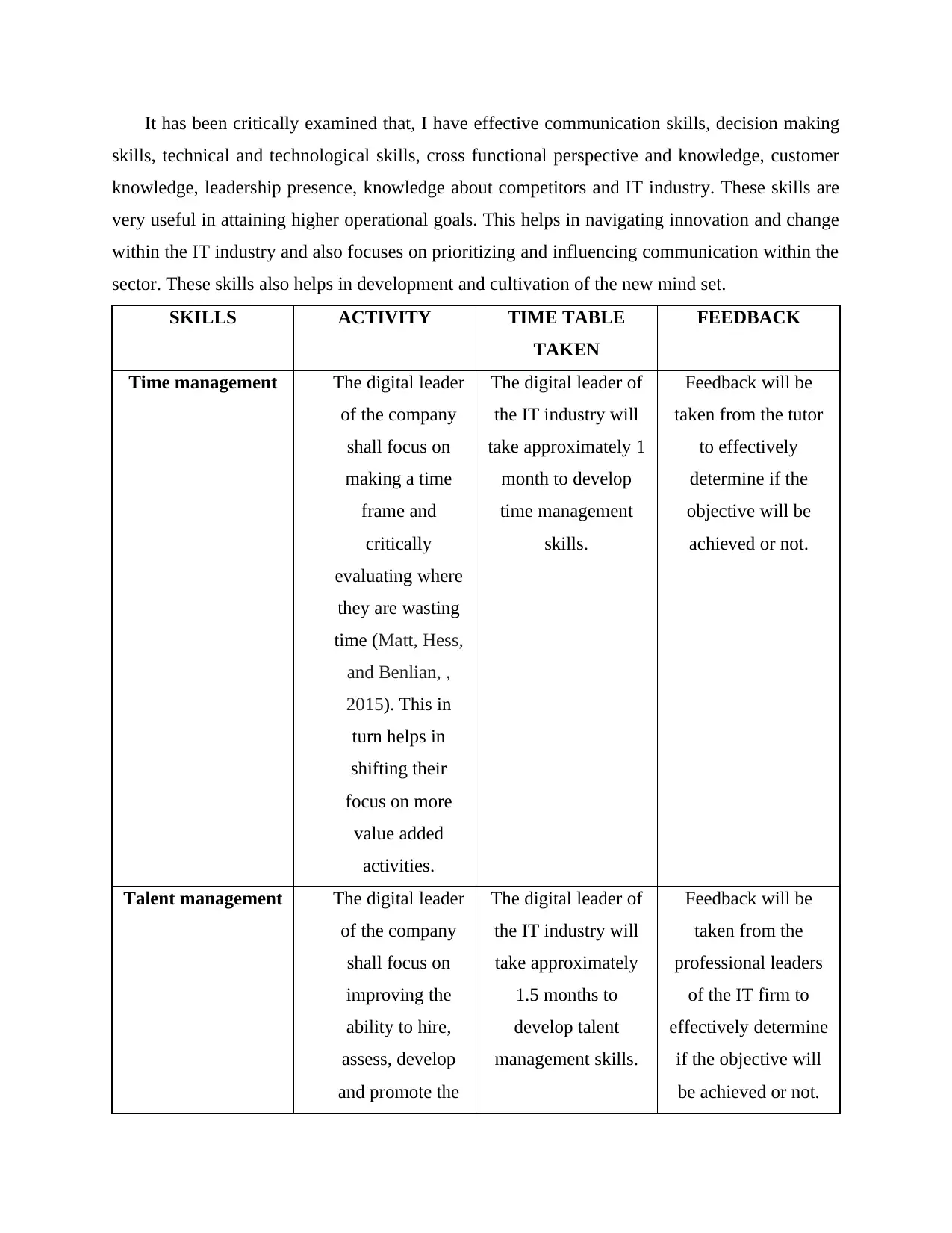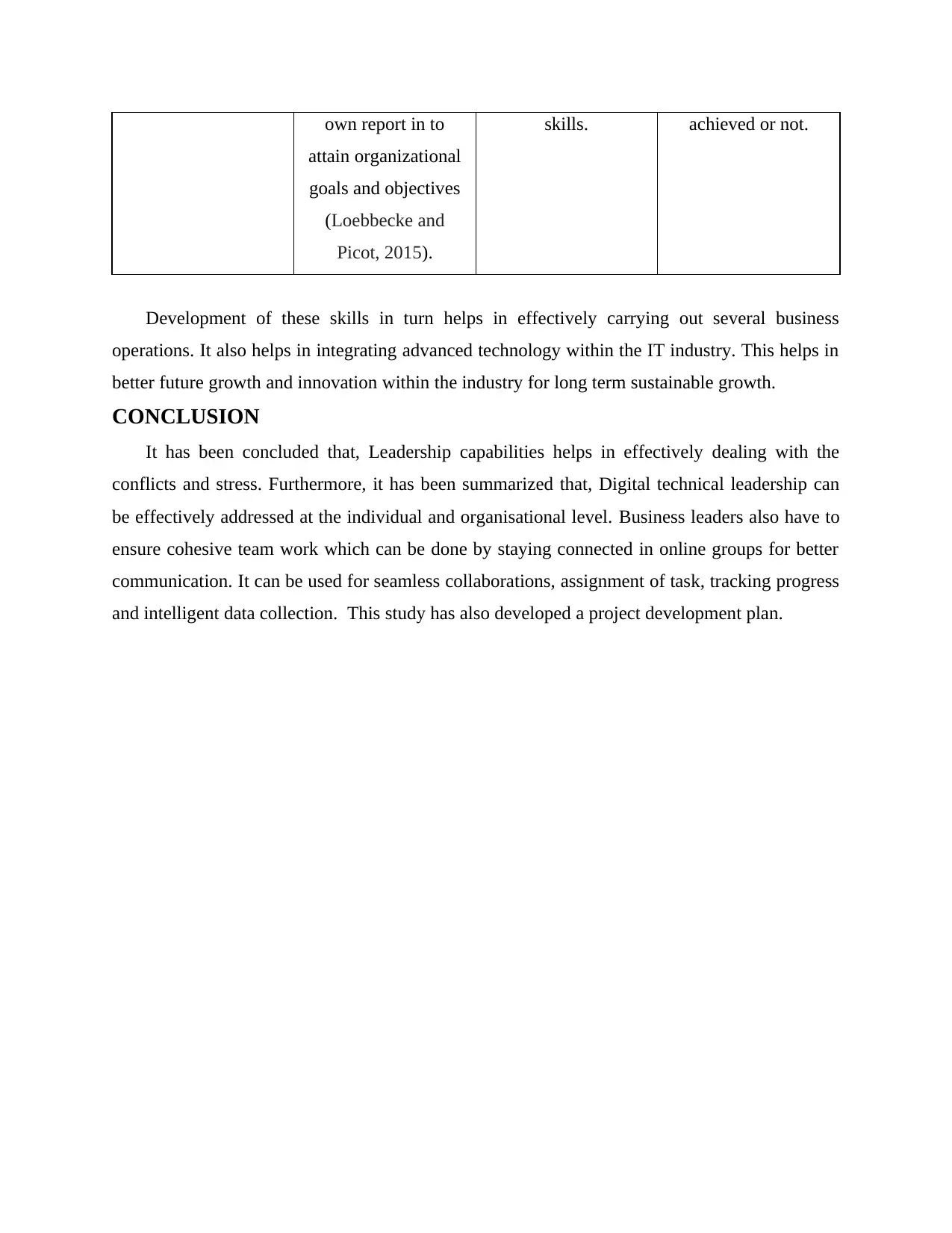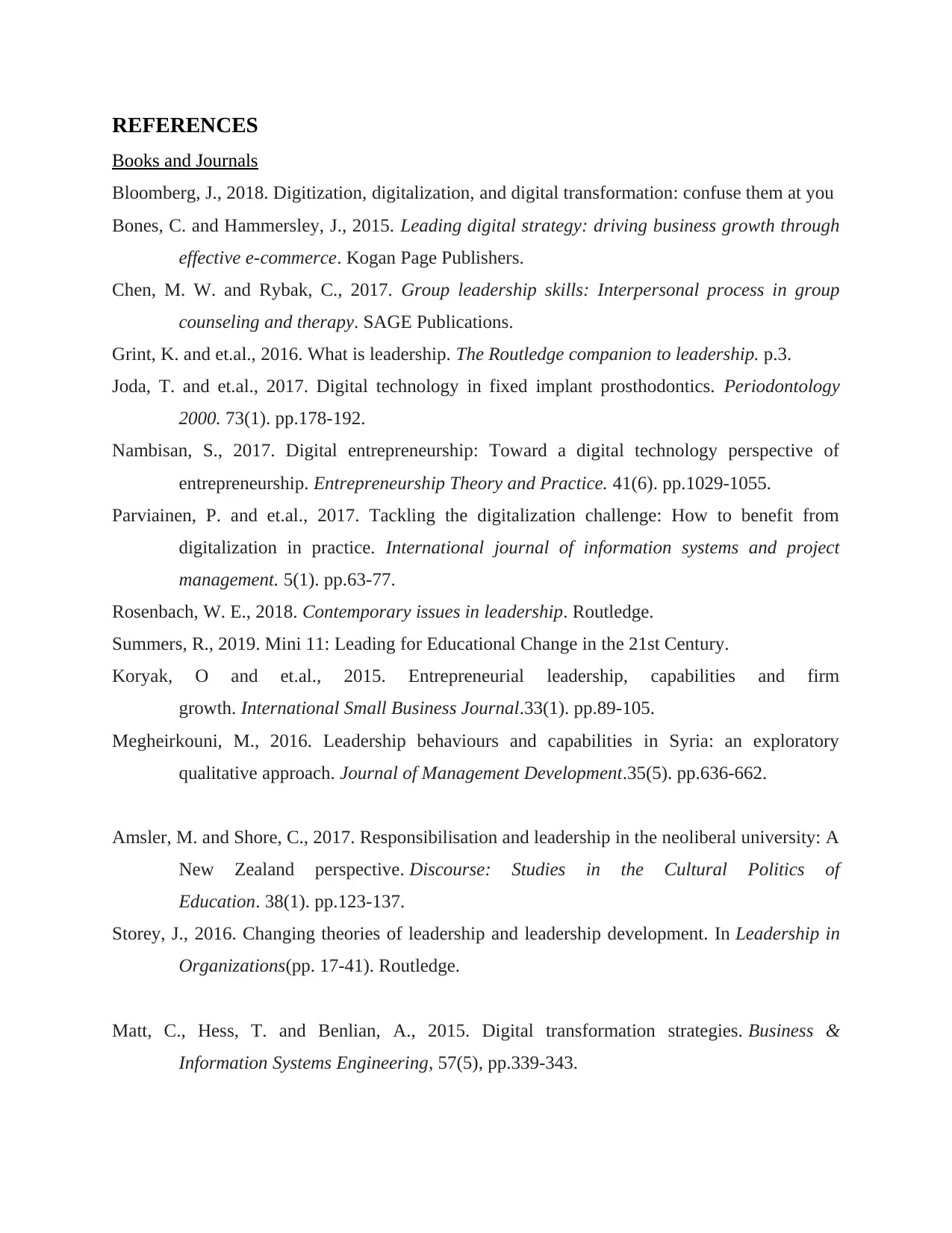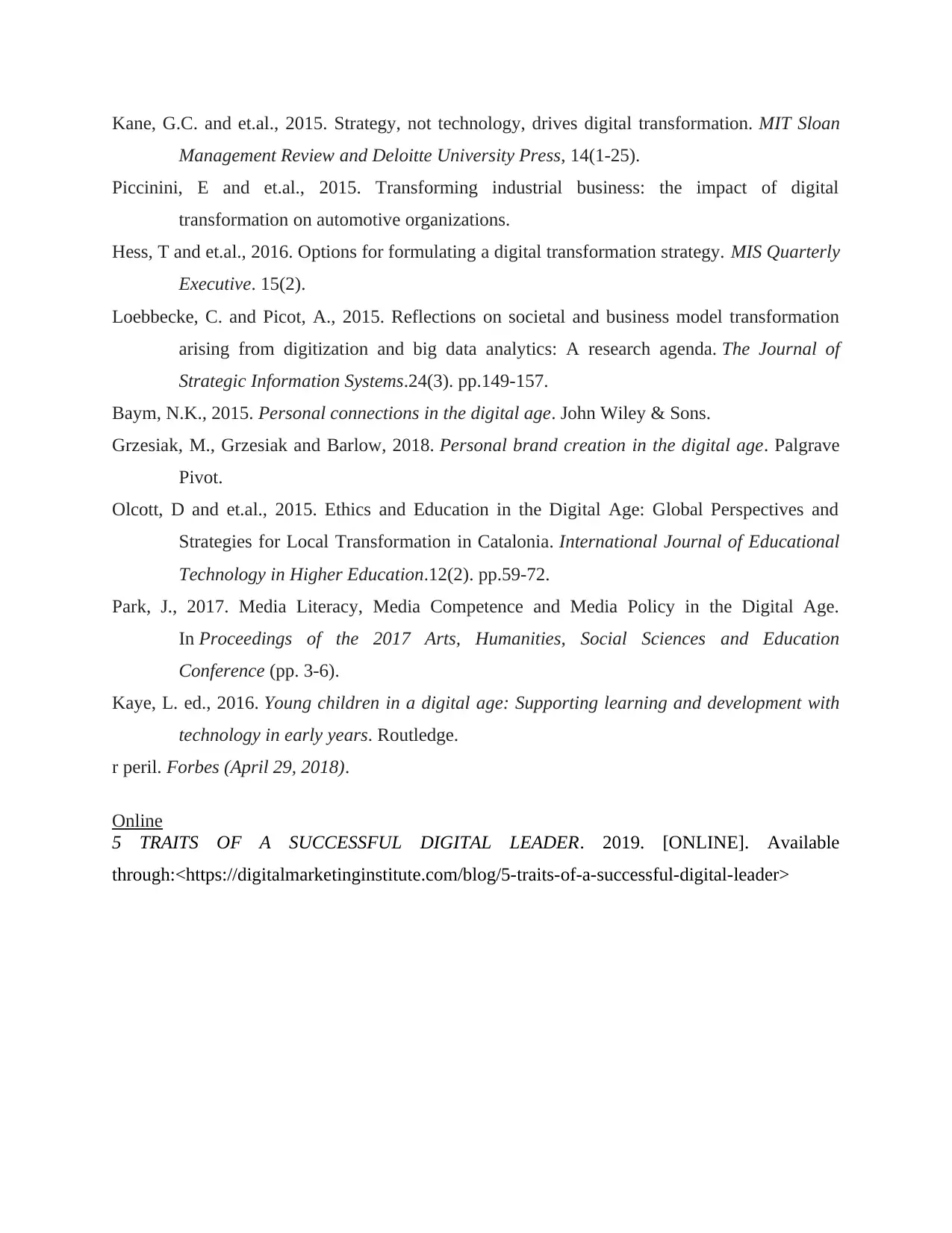This report discusses the importance of leadership in the digital age and its impact on business performance and transformation. It explores different leadership models and frameworks, self-awareness and continuous development, and contemporary issues in professional practices. The report also highlights the key leadership capabilities and behaviors, and their application in managing geographically dispersed teams. Additionally, it covers the role of digital leaders in the IT industry, their focus on innovation and collaboration, and the importance of networking proficiency and having a vision for success. The report concludes with insights on business transformation and the role of digital technical leadership in achieving organizational goals.
![[object Object]](/_next/static/media/star-bottom.7253800d.svg)
![[object Object]](/_next/static/media/star-bottom.7253800d.svg)
